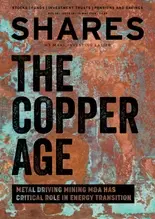
It was an up and down week for US stocks as investors contended with the hangover created by the higher rates for longer message coming out of the Federal Reserve at its latest meeting.
Easing oil prices supported a recovery later in the week, even if crude remains above $90 per barrel, as the retreat helped dial down fears about a big resurgence in inflationary pressures.
Renewable energy specialist NextEra Energy (NEE:NYSE) came under pressure as its subsidiary NextEra Energy Partners (NEP:NYSE) plunged as it downgraded growth expectations thanks to higher borrowing costs.
Used car seller CarMax (KMX:NYSE) went into reverse as it reported weaker than expected quarterly earnings on lower demand while US gold miner Newmont (NEM:NYSE) fell in sympathy with lower precious metal prices.
On the other side of the coin medical equipment outfit ResMed (RMD:NYSE) made progress as bargain hunters emerged following the negative market reaction to its weak fourth quarter earnings in August. Fellow health care device specialist DexCom (DXCM:NASDAQ) was also in demand.
NIKE
Nike traded sharply higher in after hours trading despite missing expectations on first quarter revenue as the company’s earnings and margins came in higher than anticipated (28 September).
The trainer and sports apparel giant reported earnings per share of $0.94 versus the $0.75 which had been forecast, with revenue just a smidge lower than the pencilled in $12.98 billion at $12.94 billion. Significantly the company expects margin growth in the second quarter, breaking six straight quarters of declines.
Sales were up in every region bar North America and the company made good progress on its direct-to-consumer strategy with sales up 6% through its own website and stores. Nike also announced plans to refresh its Jordan brand and its running shoe portfolio as it looks to beat off any competitive threats in these areas.
Inventories were down 10%, helping to calm fears the company would be left with lots of excess stock which it would have to sell at a discount during the crucial holiday trading season.
COSTCO
Wholesaler Costco (COST:NASDAQ) posted revenue and earnings for the fourth quarter to the start of September which beat expectations but showed a slowdown in underlying sales in its core US market.
Total revenue for the final three months of the firm’s financial year were $78.9 billion against market forecasts of $77.9 billion, up 1.1% on an underlying basis but only 0.2% in the US as customers shopped more frequently but restricted their spending to essentials like groceries rather than splashing out on niceties.
Traffic rose 5.2% worldwide and 5% in the US, but the average customer spend was 4% lower worldwide and 4.5% lower in the US.
According to CNBC, membership-based warehouse clubs like Costco have gained market share in the last couple of years due to ‘more Americans cooking from home and more millennials moving into suburban homes with bigger pantries during the pandemic’, while inflation has also played a part as consumers look to cut their bills.
Membership increased to 71 million paid household members at the end of the quarter, up nearly 8% from the same period last year and ahead of the 3% increase in new store openings.
However, the firm skipped increasing its membership fee, disappointing Wall Street analysts who had expected a rise, and the shares dipped 1% on the day of results.
On a positive note, Costco said its gross margin had improved even without an increase in fees and it didn’t report a significant rise in ‘shrinkage’ or theft from its stores, unlike some of its competitors.




